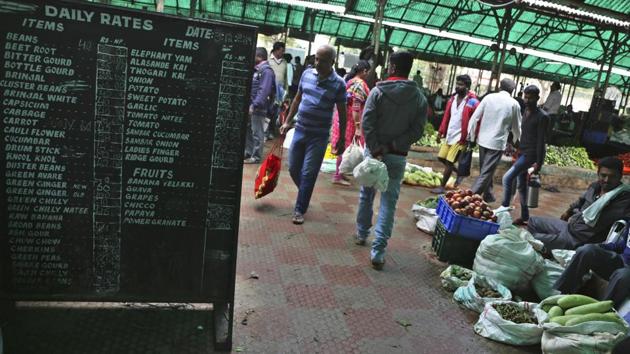Analysis | Is India heading into a stagflation?
India’s retail inflation rose to a nearly 64-month-high of 7.35 per cent in December, rising well beyond the Reserve Bank’s tolerable limit of four per cent (plus, minus two per cent), according to official data released on Monday. On the other hand, the Central Statistics Office has estimated GDP growth in 2019-20 to fall to five per cent.
India’s retail inflation rose to a nearly 64-month-high of 7.35 per cent in December, rising well beyond the Reserve Bank’s tolerable limit of four per cent (plus, minus two per cent), according to official data released on Monday.

On the other hand, the Central Statistics Office has estimated GDP growth in 2019-20 to fall to five per cent. High inflation and slow growth have led economists to wonder if India has entered what is known as a phase of stagflation, or stagnant growth coupled with high prices.
Here’s the lowdown on what this could mean for the larger economy:
What has driven the large inflation spiral? Well, largely food prices. Vegetable price inflation at 60.5% year on year has contributed 3.7 percentage points to the headline inflation of 7.4%.
“Prices of other food items have also increased, which bears close monitoring, but higher vegetable prices are exaggerating the headline,” says economist Sonal Varma of Nomura Securities, a brokerage firm.
Going forward, what will inflation look like?
Most economists expect inflation to remain high in January as well. According to Varma, supply-side pressures are likely to ease after quarter one, with headline inflation falling closer to 4.5-4.7 per cent in the second and third quarter and sharply lower to 2-2.5 per cent in the fourth quarter. Therefore, this surge in inflation looks transitory.
Is the current spiral driven by demand-side or supply side factors? At the moment, prices have risen due to supply-side shocks from food, oil and gold, which face an upside risk. There is no sign of what economists call demand-pull inflation.
For instance, even though core inflation (inflation of goods other than food and fuel) picked up in December, it is trending on a more modest level of 0.28% on a three monthly moving average basis (i.e at an annualised 3.4%).
How will policymakers respond? According to Nomura, the RBI will extend its pause i.e. continue to steady with key interest rates, while maintaining an “accommodative stance”. The government’s plans to slow expenditure to contain the fiscal deficit will likely have an impact on growth in quarter one because the GDP has been kept going by public spending alone. Analysts such as Varma expect “a sub-par recovery in GDP growth to 5.5% in 2020 versus 4.9% in 2019”. The stagflationary phase looks transitory, Nomura Securities said in a note.




